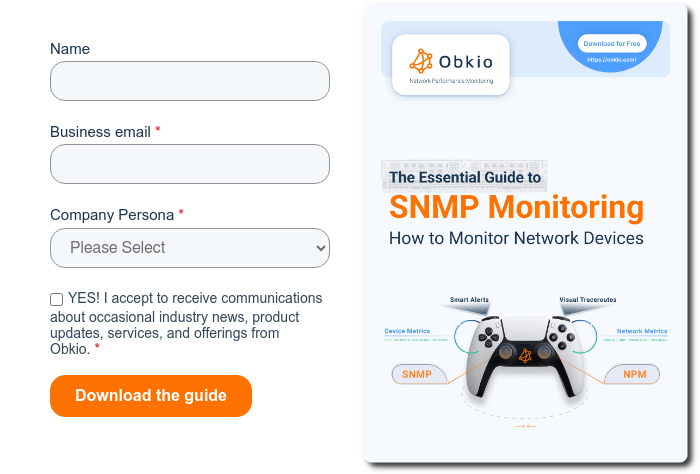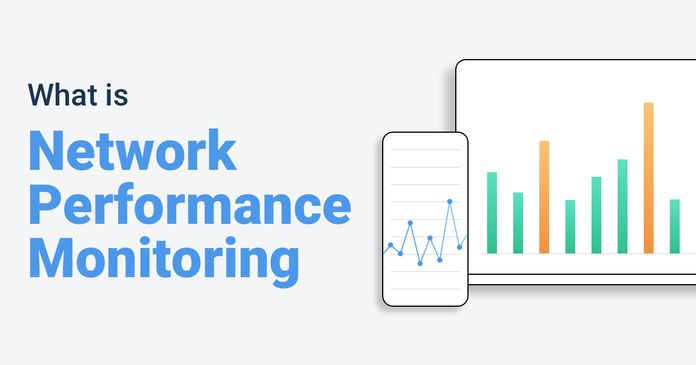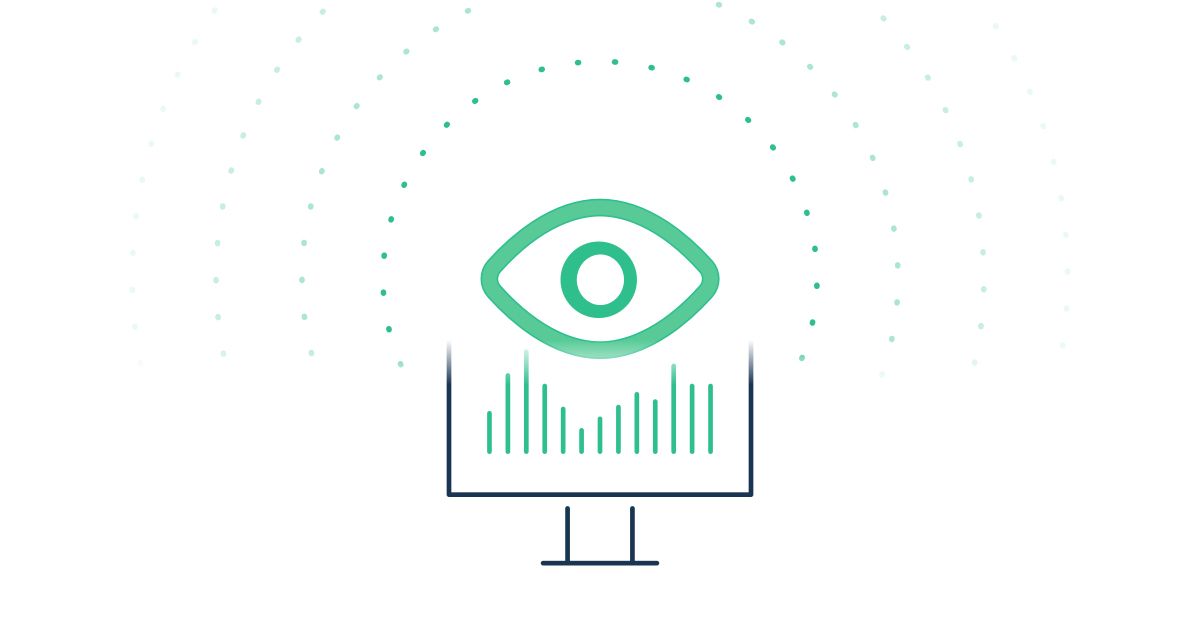Table of Contents
Table of Contents
Welcome to the world of networking, where routers, switches, firewalls and other network devices reign supreme. From the backbone routers that facilitate data flow to the intricate web of switches managing local connections, maintaining a vigilant eye on your network devices is at the core of ensuring a high functioning network infrastructure.
In this comprehensive guide, we explore the ins and outs of monitoring network devices, from the mighty routers that pave the way for data to the nimble switches that direct traffic with finesse. We'll uncover the potential pitfalls of neglecting network monitoring, discuss the key metrics to track, and equip you with practical tips and tools to ensure the uninterrupted flow of data in your network.
So, whether you're a seasoned network administrator looking to refine your monitoring strategy or a newcomer eager to grasp the essentials, join us on this journey as we navigate the landscape of network device monitoring—from routers to switches—and empower you to build and maintain a robust, efficient, and secure network infrastructure.
First, let's talk about why keeping an eye on your network devices is a pretty smart move. Network devices, ranging from routers to switches, play pivotal roles in shaping the flow of data. They're the ones making sure your data gets from A to B without doing the digital equivalent of taking the scenic route or getting lost in cyberspace.
As we explore the importance of monitoring, we'll simultaneously dissect the key network devices in a network infrastructure. Routers, switches, firewalls, and other components play specific, indispensable roles in ensuring data flows seamlessly. Understanding the functionalities of these devices is paramount, serving as the foundation for constructing networks that not only operate efficiently but also stand resilient in the face of evolving connectivity demands.
Network devices play a crucial role in the functioning of a network infrastructure, serving as the backbone that enables communication and data transfer among various devices. Each network device has a specific purpose and contributes to the overall efficiency, security, and reliability of the network.
Let’s go through some key network devices and their roles:
Routers are like traffic directors for data in a network. They determine the most efficient path for data packets to travel from the source to the destination across different networks. Routers make decisions based on the destination IP address of packets, using routing tables to forward data between networks. They connect different subnets or networks, ensuring proper communication.
Network Switches operate at the data link layer (Layer 2) of the OSI model. They facilitate communication within the same network or subnet. Switches use MAC addresses to forward data only to the specific device for which it is intended, reducing unnecessary traffic. This improves network efficiency and bandwidth utilization.
Firewalls are essential for network security. They monitor and control incoming and outgoing network traffic based on predetermined security rules. Firewalls inspect data packets and determine whether to allow or block them based on defined security policies. They are crucial for protecting the network from unauthorized access, malware, and other security threats.
Modems (modulator-demodulator) are essential for connecting a network to the internet. They convert digital signals from the network into analog signals for transmission over traditional phone lines and vice versa. Modems enable the exchange of data between digital devices and the analog infrastructure of the Public Switched Telephone Network (PSTN) or other communication channels.
Access points are used in wireless networks to provide connectivity between wireless devices and a wired network. APs allow wireless devices to connect to the network infrastructure. They transmit and receive wireless signals, enabling communication between wireless devices and the rest of the network.
While less common in modern networks, hubs operate at the physical layer (Layer 1) and are basic devices that connect multiple devices in a network. Hubs broadcast data to all connected devices, which means every device on the hub receives the data. Hubs lack the intelligence to selectively forward data and are not as efficient as switches.
Understanding the roles of these network devices is fundamental to designing, implementing, and maintaining a robust and efficient network infrastructure tailored to the specific needs of an organization or individual users. Each device contributes to creating a seamless, secure, and well-managed network environment.


Monitoring network devices is crucial for several reasons, all of which contribute to maintaining a healthy, efficient, and secure network infrastructure. So if you’re planning on skipping it, here’s why you shouldn’t:
- Identifying Bottlenecks: Monitoring helps identify areas of network congestion, latency, or poor performance. By pinpointing these bottlenecks, network administrators can take corrective actions to optimize performance and ensure smooth data flow.
- Early Detection of Issues: Monitoring allows for the early detection of network issues such as hardware failures, connectivity problems, or configuration errors. This enables prompt troubleshooting and reduces downtime.
- Anomaly Detection: Monitoring helps identify unusual or suspicious network activity that may indicate a security breach. Timely detection of anomalies allows for quick response to potential threats, protecting sensitive data and preventing unauthorized access.
- Bandwidth Management: Monitoring helps track bandwidth usage and patterns. This information is valuable for optimizing resource allocation, preventing network congestion, and ensuring that critical applications receive the necessary bandwidth.
- Capacity Planning: Monitoring provides insights into network usage trends over time. This data is essential for capacity planning, allowing organizations to anticipate future demands and upgrade their network infrastructure accordingly.
- Meeting Regulatory Requirements: Many industries have specific regulations regarding data security and network performance. Monitoring helps organizations demonstrate compliance with these regulations through detailed reporting and auditing.
- Proactive Maintenance: Regular monitoring enables proactive maintenance, allowing network administrators to address potential issues before they escalate. This proactive approach minimizes downtime and reduces the impact on users.
- Quality of Service (QoS) Management: For networks that provide services with different priority levels, such as voice over IP (VoIP) or video streaming, monitoring helps ensure that the quality of service meets predefined standards.
Monitoring network devices is a huge part of ensuring the overall health, security, and efficiency of a network. It enables organizations to respond swiftly to challenges, make informed decisions, and ensure that their network infrastructure aligns with the evolving needs of users and the business.
Ready to elevate your network monitoring game? Look no further! Obkio's Network Monitoring tool, coupled with the robust capabilities of SNMP (Simple Network Management Protocol), empowers you to gain unparalleled insights into your network devices.
Obkio is an active, end-to-end network monitoring tool designed to monitor your entire network infrastructure, from LAN to WAN, including network devices, Internet, VoIP applications and more!
Why Choose Obkio and SNMP?
- Seamless Device Monitoring: Obkio’s simplified SNMP features provide a user-friendly solution for monitoring routers, switches, and other critical network devices.
- Comprehensive Visibility: With SNMP, you'll have access to a wealth of performance metrics, allowing you to monitor bandwidth usage, device health, and more in real-time. But Obkio goes beyond devices, monitoring your network as a whole.
- Proactive Issue Resolution: Identify and address potential network issues before they impact performance, thanks to Obkio's proactive monitoring and SNMP's detailed data collection.

How to Get Started:
- Sign Up: Create your Obkio account and get started with a free trial.
- Add Devices: Easily integrate SNMP-enabled network devices with Obkio's platform.
- Configure Monitoring: Customize your monitoring preferences and set up alerts tailored to your network's unique needs.
- Experience Seamless Monitoring: Enjoy real-time insights into your network's performance, streamline issue resolution, and ensure optimal connectivity.
Don't Settle for Less. Monitor with Confidence!

The first step towards ensuring the optimal performance and security of your network devices is the thoughtful selection of the right monitoring techniques. In this step, we’ll explore a range of powerful tools and technologies that form the backbone of network monitoring strategies. From the foundational capabilities of SNMP to the granular insights provided by flow-based monitoring with NetFlow and sFlow, and the detailed analysis offered by packet sniffers and analyzers, each tool plays a crucial role in the comprehensive understanding of network behavior.
Let’s dive in:
Simple Network Management Protocol (SNMP) is a fundamental protocol for managing and monitoring network devices. SNMP allows devices like routers, switches, and servers to communicate essential information to a central management system.
Key Benefits:
- Real-time Monitoring: SNMP enables real-time monitoring of network performance metrics.
- Alerts and Notifications: Set up alerts based on predefined thresholds for proactive issue resolution.
- Device Management: Facilitates centralized control and management of network devices.
Learn about what SNMP monitoring is & how to use it to monitor performance of networking devices like firewalls, routers, switches and wifi access points.
Learn more

NetFlow and sFlow are flow-based monitoring technologies that provide granular insights into network traffic by analyzing flows—sequences of packets between a source and destination.
Key Benefits:
- Traffic Analysis: Gain detailed visibility into the flow of data across the network.
- Bandwidth Usage: Identify bandwidth-hungry applications and users.
- Anomaly Detection: Detect unusual patterns that may indicate security threats.
Packet sniffers and analyzers capture and analyze network traffic at the packet level. These tools decode and display the content of data packets, offering in-depth visibility into network communication.
Key Benefits:
- Troubleshooting: Analyze packet-level details to diagnose and resolve network issues.
- Security Monitoring: Detect and investigate suspicious activities and potential security threats.
- Performance Optimization: Identify inefficient or redundant communication patterns.
Cloud-based monitoring solutions leverage the scalability and flexibility of cloud computing to provide remote and centralized monitoring capabilities. These solutions offer a wide array of features for monitoring diverse network environments.
Key Benefits:
- Accessibility: Monitor networks from anywhere with internet access.
- Scalability: Easily scale monitoring capabilities to match the growing demands of your network.
- Automated Updates: Benefit from automatic updates and enhancements without manual intervention.
From the broad visibility offered by SNMP to the detailed analysis provided by packet sniffers and the scalability of cloud-based solutions, understanding these monitoring techniques empowers network administrators to build a robust and adaptive monitoring strategy tailored to their specific needs.
Now, it’s time to choose the right tool!
When you’re monitoring network devices, you can’t _just _monitor network devices. You need to monitor your network as a whole to truly understand where network issues are coming from.
In contrast to conventional tools, the latest generation of Network Device Monitoring solutions, like Obkio Network Performance Monitoring software, leverages advanced Network Performance Monitoring features. These features promptly alert you to potential issues within your network and its devices the moment a decline in network performance is detected.
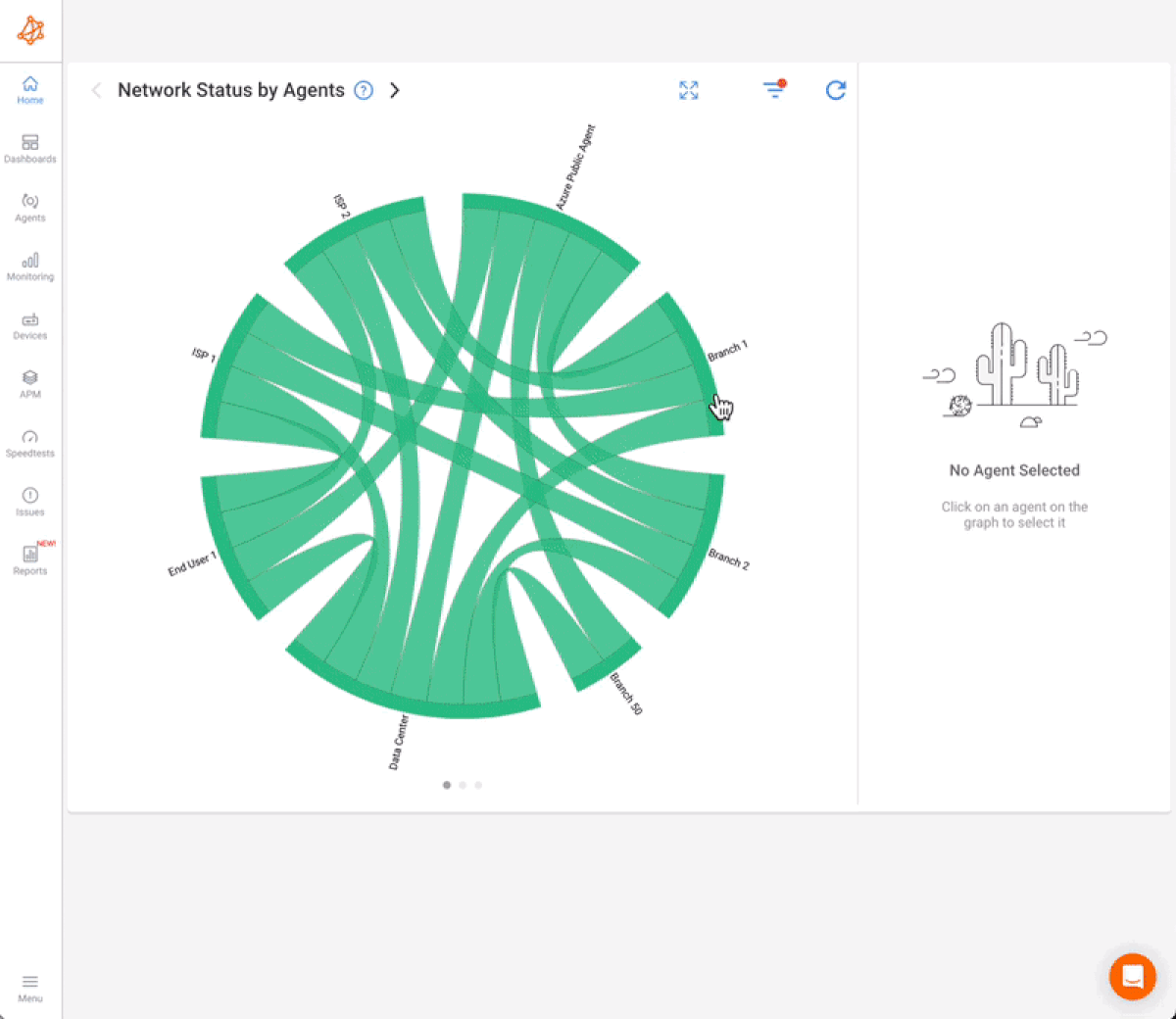
This ensures that you receive only the most relevant alerts precisely when they are critical. The Network Device Monitoring functionality embedded in Obkio’s Network Monitoring Software serves as a pivotal tool for troubleshooting performance-related challenges.
Offering a swift and user-friendly solution, it provides detailed insights into the performance of your core network devices. This enables you to swiftly and proactively identify and address network device issues such as congestion, elevated CPU usage, and interface errors. In essence, it becomes your go-to resource for efficiently resolving performance concerns.

Before monitoring your network devices, you need to deploy at least one Monitoring Agent.
Monitoring Agents are a unique software developed by Obkio to monitor network performance in key network locations (data centers, branch offices, clouds etc.). They continuously exchange synthetic traffic in your network to measure performance using key network metrics, and identify performance issues.
You need a Monitoring Agent deployed so that it can communicate with your network device to measure performance. We always recommend using the Agent closest to the device you want to monitor.

- Local Agents: Installed in the targeted office location experiencing network issues. There are several Agent types available (all with the same features), and they can be installed on MacOS, Windows, Linux and more.
- Public Monitoring Agent: These are deployed over the Internet and managed by Obkio. They compare performance up to the Internet and quickly identify if the network issue is global or specific to the destination. For example, measure network performance between your head office and your firewall.
Once you’ve installed your monitoring agents, you can then start monitoring your network devices using SNMP by adding the devices inside the Obkio App.
The device must support SNMP. Obkio supports all versions of SNMP (v1, v2c and v3) and of course, read-only access is needed. Learn more about the supported devices here.
No technical expertise in SNMP and OID Detection is required. Once you add your devices, Obkio’s network device monitoring feature adapts to any time of equipment.
For example, whether you’re using a Meraki router, Cisco, Fortinet or SonicWall - Obkio will collect the appropriate information for that equipment to monitor the device and identify performance issues.
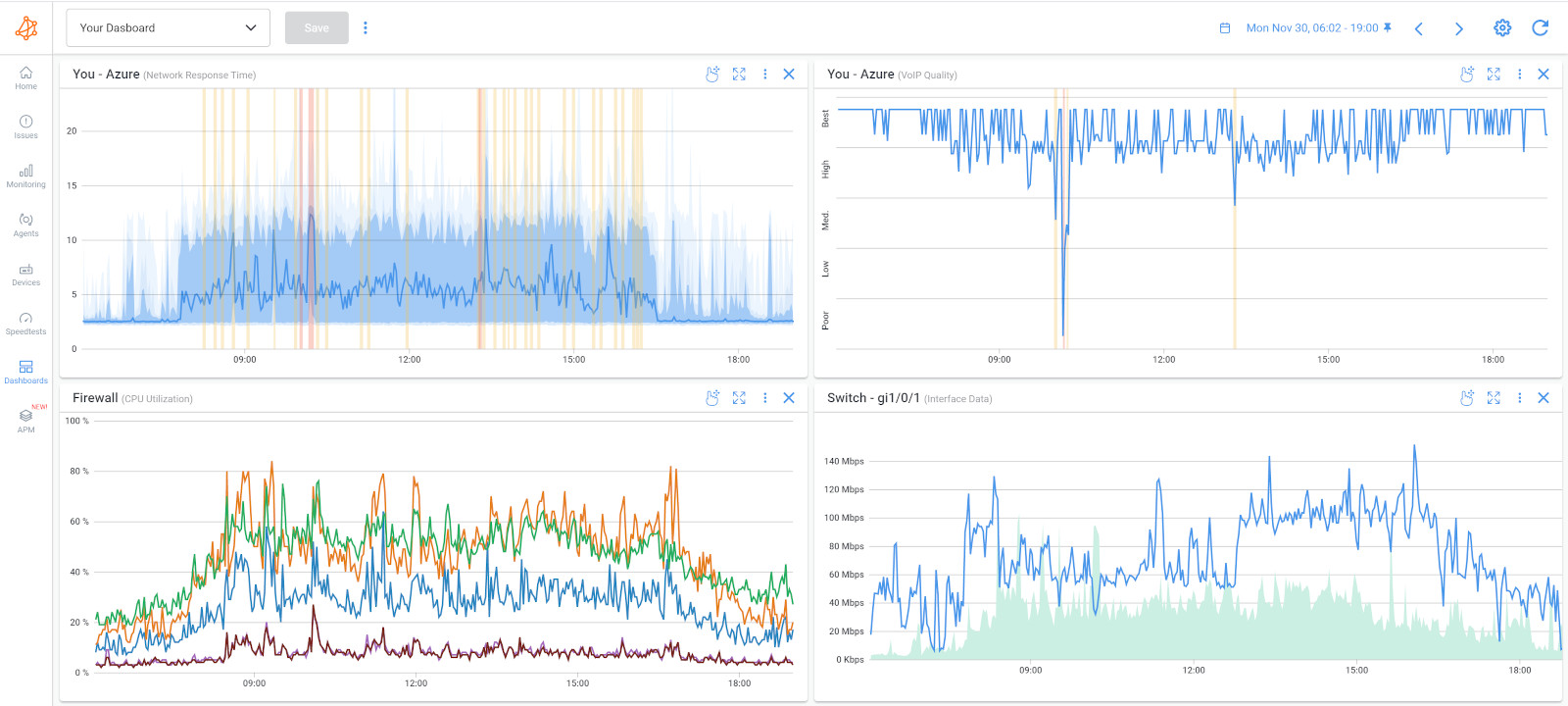
What Network Devices Should You Monitor?
1. Router Monitoring
Routers are devices that connect two or more networks together and route data packets between them. They typically operate at the network layer of the OSI model and use routing tables to determine the best path for data to travel. They direct traffic between different networks, making routing decisions based on IP addresses.
When monitoring router performance, it’s important to monitor bandwidth usage, routing performance, and potential security issues.
2. Network Switch Monitoring
Switches are devices that connect multiple devices on a network and allow them to communicate with each other. They typically operate at the data link layer of the OSI model and use MAC addresses to forward data packets between devices.
For network switches, it’s important to monitor network congestion, switch performance, and connectivity issues.
3. Firewall Monitoring
Firewalls are devices that enforce security policies and protect a network from unauthorized access by filtering incoming and outgoing network traffic They typically operate at the network layer of the OSI model and can be configured to allow or block traffic based on a variety of rules and policies.
For firewalls, it’s important to monitor for security events, rule violations, and changes in firewall performance.
4. Load Balancers:
Load balancers are devices that distribute network traffic across multiple servers or devices to improve performance and ensure high availability. They typically operate at the application layer of the OSI model and use various algorithms to distribute traffic based on factors such as server load and response time.
For load balancers, it’s important to monitor balanced traffic distribution, server health, and potential bottlenecks.
5. Server Monitoring
Servers are devices that provide services or resources to other devices on a network, such as file storage, web hosting, email hosting, and database management. They can be configured to run a variety of operating systems and applications, and typically operate at multiple layers of the OSI model.
For servers, it’s important to monitor server performance, resource utilization, and responsiveness.
6. Access Points (APs)
Wireless access points: Wireless access points are devices that provide wireless connectivity to devices on a network. They typically operate at the physical and data link layers of the OSI model and use Wi-Fi standards to transmit data over the air.
For APs, it’s important to monitor signal strength, connection stability, and potential interference.
7. Modems:
Modems are devices that convert digital data to analog signals for transmission over a telephone or cable line, and vice versa. They are typically used to connect to the internet or other remote networks.
For modems, it’s important to monitor for connectivity issues, signal strength, and data transfer rates.
8. Gateways:
Gateways connect networks with different communication protocols, enabling seamless communication between them. Monitoring gateways ensures proper protocol conversion, data translation, and helps identify potential bottlenecks in network communication.
9. VoIP Phones:
VoIP phones enable voice communication over an IP network, allowing users to make calls using the internet. Monitoring VoIP phones involves assessing call quality, latency, and connectivity to ensure uninterrupted and high-quality voice communication.
10. Printers and Scanners:
Networked printers and scanners provide printing and scanning services accessible over the network. Monitoring these devices includes checking for print queue issues, scanning errors, and ensuring overall device health.
11. UPS (Uninterruptible Power Supply):
UPS devices provide backup power to network devices in case of a power outage, preventing data loss and ensuring uninterrupted operation. Monitoring UPS involves checking battery health, and power status, and identifying potential failures to maintain network resilience.
12. NAS (Network Attached Storage):
NAS devices offer centralized storage accessible over a network, allowing users to store and retrieve data. Monitoring NAS includes assessing storage capacity, data access speed, and ensuring overall NAS health.
13. Security Cameras:
Security cameras monitor physical spaces for security purposes, providing video surveillance. Monitoring security cameras involves checking camera connectivity, video quality, and identifying potential security breaches.
14. IoT Devices:
Internet of Things (IoT) devices include sensors, smart thermostats, and various connected devices that contribute to data collection and automation. Monitoring IoT devices involves tracking connectivity, data transmission, and addressing potential security vulnerabilities to ensure their reliable operation within the network.
Many Network Device Monitoring tools, like Obkio, use SNMP within their Network Device Monitoring features.
SNMP, or "Simple Network Management Protocol," stands as an Internet Standard protocol designed for monitoring and managing network devices linked via an IP address. This network monitoring protocol serves as a means of monitoring network devices, enabling the collection of information regarding their performance, status, and various metrics.
The inaugural SNMP standard, known as RFC, was initially published in May 1990 and has undergone subsequent evolution. While alternative telemetry protocols have emerged, SNMP persists as the predominant protocol universally supported by the majority of network equipment.
SNMP polling represents a methodology within network device monitoring, wherein network devices are queried using the Simple Network Management Protocol (SNMP) to gather performance and status information. SNMP, as a standardized protocol, remains instrumental in the management and monitoring of diverse network devices, including routers, switches, servers, and printers.
After adding your network devices, Obkio’s Network Device Monitoring leverages Ultra-Fast Polling at 30-second intervals, offering significantly enhanced precision compared to conventional software polling intervals of every 5 minutes.
This higher frequency ensures the accurate identification of brief spikes in traffic or CPU utilization that impact network performance, allowing for the swift identification of the root cause behind performance issues. In contrast, the less frequent polling of traditional network monitoring software every 5 minutes tends to obscure these crucial peaks that are instrumental in pinpointing performance-related issues.
SNMP polling involves sending SNMP requests, called SNMP "GET" requests, to network devices to collect information such as CPU usage, memory usage, network traffic, and interface status. The SNMP "GET" requests are sent to a specific OID (Object Identifier) on the network device, which contains the information being requested.
SNMP polling is typically performed by an SNMP manager, such as a network management tool or a monitoring system. The SNMP manager sends SNMP "GET" requests at regular intervals, such as every five minutes, to collect information from network devices.
Here's how it works with Obkio:
- Obkio's Network Performance Monitoring tool sends an SNMP request to a device, asking it to provide information about a specific metric, such as CPU usage, bandwidth utilization, or uptime.
- The device receives the request and responds with the requested information, which is sent back to Obkio.
- Obkio's app collects the information from the device and stores it in a database, where it can be used for analysis and reporting.
- Obkio can then use this information to identify issues, troubleshoot problems, and optimize the performance of the network and its devices.
SNMP Polling typically operates on a scheduled basis. Obkio sends requests to devices at regular intervals (e.g. every 30 seconds ), and collects the responses over time to create a historical record of performance metrics. This allows you to track changes over time and identify trends that may indicate potential issues or opportunities for optimization.
With Obkio, you don’t need to establish VPNs between a centralized monitoring server and the LANs where the network devices are located because all the SNMP polling is already done by Obkio’s Monitoring Agents.


Using SNMP polling to monitor network devices offers a range of benefits that contribute to efficient network management. Here are some key advantages:
- Real-Time Monitoring: SNMP polling enables real-time monitoring of network devices. By regularly querying devices for status and performance information, administrators gain immediate insights into the health of the network.
- Comprehensive Visibility: SNMP allows administrators to collect a wide array of metrics, providing a comprehensive view of network device performance. This includes data on bandwidth usage, error rates, CPU utilization, and more.
- Proactive Issue Identification: With SNMP polling, administrators can proactively identify potential issues before they escalate. By regularly polling devices for performance data, abnormalities and deviations from standard behaviour can be detected early on.
- Customizable Alerts and Notifications: SNMP supports the configuration of customizable alerts and notifications. Administrators can set threshold values for specific metrics, triggering alerts when predefined limits are exceeded. This ensures that critical issues are promptly addressed.
- Simplified Troubleshooting: SNMP polling facilitates streamlined troubleshooting processes. When network issues arise, administrators can refer to the collected SNMP data to pinpoint the root cause of problems, reducing the time and effort required for issue resolution.
- Scalability: SNMP is highly scalable, making it suitable for networks of varying sizes. Whether managing a small office network or a large enterprise infrastructure, SNMP polling can be implemented effectively to scale with the network's complexity.
SNMP polling is a powerful and versatile tool for monitoring network devices, offering real-time insights, proactive issue identification, and the flexibility to adapt to diverse network environments. Its standardized nature and wide support make SNMP an invaluable protocol for effective network management.
When it comes to keeping an eye on your network devices, especially with cool tools like Obkio, it's all about watching those key network metrics. You know, things like how much bandwidth is getting used, how fast data is moving, and if there are any hiccups in the system.
Tracking of these metrics allows administrators to promptly detect potential issues, identify their underlying causes, and proactively initiate resolutions. This methodical approach not only ensures the seamless operation of network devices but also contributes to heightened reliability, security, and overall efficiency within the network infrastructure.
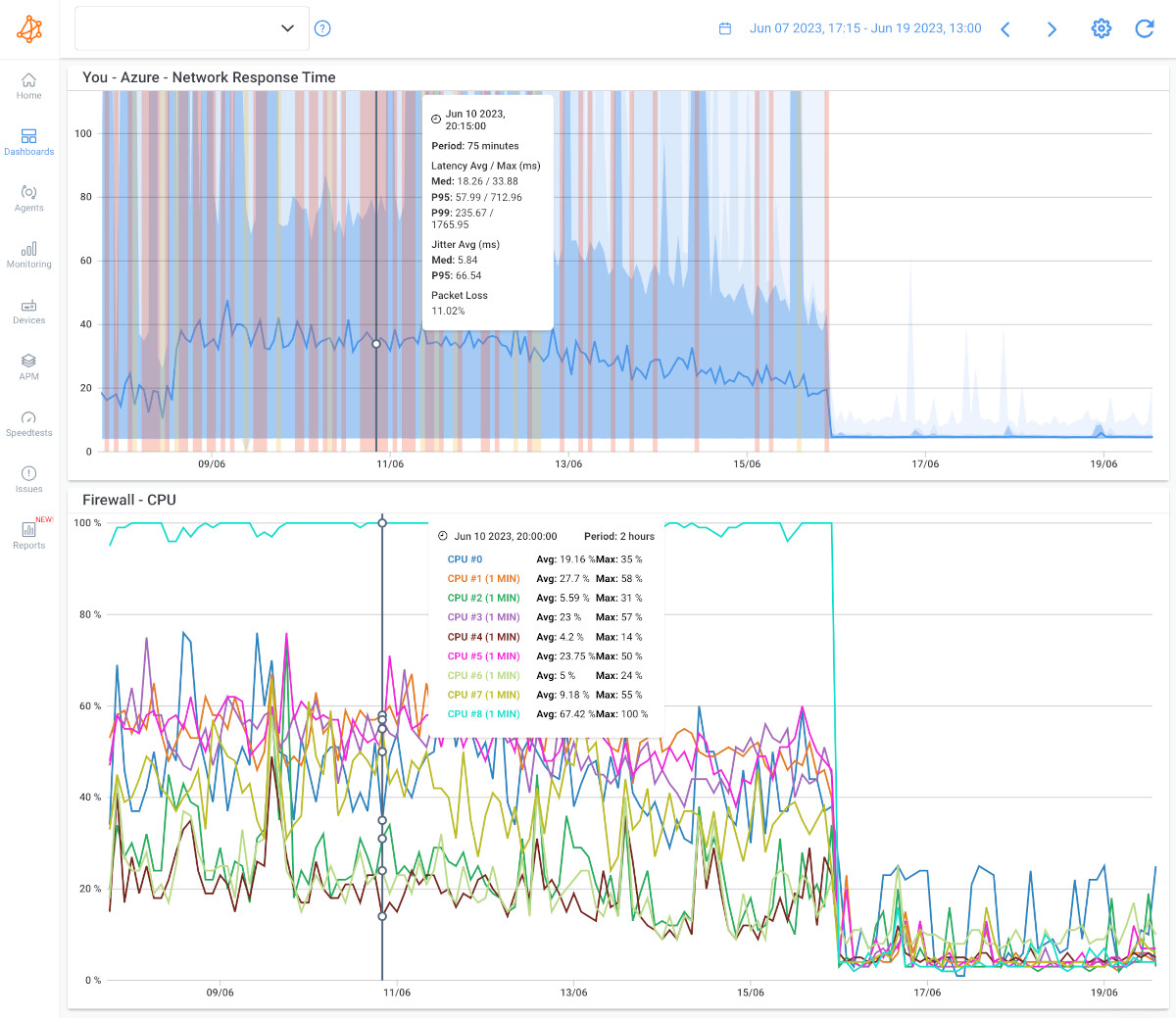

Although Obkio’s Network Monitoring tool will automatically measure these metrics for you, it’s still important to understand what they are:
- Bandwidth Utilization: The amount of network bandwidth being used at a specific point in time. Monitors overall network health, helps identify congestion, and ensures sufficient bandwidth for critical applications.
- Latency: The time it takes for data to travel from the source to the destination. Low latency is crucial for real-time applications like video conferencing and online gaming. High latency can indicate network congestion or other issues.
- Packet Loss: The percentage of data packets that fail to reach their destination. Packet loss indicates network stability and helps identify issues that may impact the integrity of data transmission.
- Error Rates: The frequency of errors in data transmission. High network error rates may indicate issues with cables, connectors, or network interfaces, affecting data accuracy and reliability.
- CPU Utilization: The percentage of CPU resources being used by a network device. High CPU utilization can lead to performance degradation and may be a sign of hardware or software issues.
- Memory Utilization: The amount of RAM being used by a network device. High memory usage can impact device performance and may lead to issues such as slow response times or device crashes.
- Interface Utilization: The level of activity on specific network interfaces (e.g., Ethernet ports). Monitors the load on individual interfaces, helping to identify bottlenecks and ensure balanced traffic distribution.
- Availability/Uptime: Uptime is the percentage of time a network device is operational and accessible. Availability ensures that devices are consistently available, minimizing downtime and maximizing network reliability.
- Security Metrics: Metrics related to network security, including intrusion attempts, firewall activity, and anomalous behaviour. Helps detect and respond to security threats, ensuring the integrity and confidentiality of data.
- Jitter: Variation in packet delay, especially in real-time applications. Low jitter is crucial for voice and video communication. High jitter can lead to audio/video quality issues.
- Device Temperature: The temperature of network hardware components. Overheating can lead to hardware failures, so monitoring device temperature is crucial for preventing damage.
- Power Usage: The amount of power consumed by network devices. Monitoring power usage aids in energy efficiency and can help identify faulty hardware.
By regularly measuring and analyzing these metrics, network administrators can gain insights into the health and performance of their network devices, allowing for proactive management and rapid issue resolution.
In the intricate web of network management, it's crucial to recognize that network issues may not always originate solely from individual devices. While traditional monitoring tools focused primarily on scrutinizing network devices, this approach often missed the broader context of network performance. Enter Obkio, a game-changer in the realm of network monitoring.
Monitoring every end of your network, Obkio goes beyond the limitations of device-centric approaches. Traditional tools, by concentrating solely on devices, may overlook issues originating from the interplay between various components or the external factors affecting the network. Obkio's holistic approach ensures that every link, node, and connection within your network is under vigilant observation.
Besides monitoring network devices, Obkio extends its watchful eye to crucial elements such as:
- Network Performance as a Whole: Evaluating the overall network performance to detect bottlenecks, congestion, and latency, ensuring a seamlessly operating network.
- Application Performance: Assessing how applications perform across the network, ensuring optimal user experience.
- Cloud Services: Monitoring the connectivity and performance of applications and services hosted in the cloud.
- User Experience: Gauging the end-user experience to identify and address issues impacting productivity.
By expanding the scope of monitoring to cover the entire network, including end-to-end visibility, Obkio excels at pinpointing issues that might be elusive to conventional tools. This comprehensive strategy is vital in identifying and resolving network challenges promptly, ensuring optimal performance, and enhancing the overall reliability of your network infrastructure.
In a world where connectivity is king, embracing a holistic monitoring solution like Obkio is your key to staying ahead of potential issues and fostering a resilient network environment.
Learn about network performance monitoring to optimize network performance. Discover key network metrics, tools & techniques & the benefits for businesses.
Learn more

Monitoring network devices is all about staying one step ahead by nailing down performance issues. It helps identify a variety of issues that can impact the performance, security, and reliability of a network. Whether it's a traffic spike, a bandwidth glitch, or a device pulling overtime, catching these problems early is what it's all about. It's like having an early warning system for your network.
Here are common network device issues that may be uncovered through monitoring:
1. Network Congestion:
Network congestion occurs when the volume of data traffic exceeds the available bandwidth, leading to delays, packet loss, and decreased overall network performance.
- Symptoms: Increased latency, packet loss, and reduced overall network performance.
- Causes: High levels of data traffic, insufficient bandwidth, or inefficient routing.
2. Bandwidth Saturation:
Bandwidth saturation happens when the network's available data-carrying capacity is fully utilized, causing slow network speeds and impacting the performance of applications and services.
- Symptoms: Slow network speeds, prolonged data transfers, and reduced application performance.
- Causes: Excessive data usage, insufficient bandwidth allocation, or unexpected spikes in traffic.
3. Device Overutilization:
Device overutilization occurs when a network device, such as a router, switch, or server, experiences high levels of CPU or memory usage, potentially leading to degraded performance.
- Symptoms: High CPU or memory usage on routers, switches, or servers.
- Causes: Resource-intensive processes, increased workload, or insufficient hardware capacity.
4. Packet Loss:
Packet loss refers to the failure of data packets to reach their destination, often resulting in retransmissions and impacting the integrity of data transmission.
- Symptoms: Data packets fail to reach their destination, leading to retransmissions.
- Causes: Network congestion, hardware issues, or poor network connectivity.
5. Interface Errors:
Interface errors indicate issues at the physical layer of network connections, such as faulty cables, hardware problems, or network interface card malfunctions.
- Symptoms: Increased error rates on network interfaces.
- Causes: Physical layer issues, faulty cables, or problems with network interface cards.
6. Security Threats:
Security threats encompass unauthorized access, hacking attempts, malware infections, or any activities that compromise the confidentiality, integrity, or availability of network resources.
- Symptoms: Unusual or unauthorized network activity, multiple login failures, or intrusion attempts.
- Causes: Malware, hacking attempts, or security vulnerabilities in network devices.
7. Device Downtime:
Device downtime occurs when a network device is inaccessible or fails to provide services, resulting in disruptions to network operations.
- Symptoms: Inability to access a network device or service.
- Causes: Hardware failures, software glitches, or misconfigurations leading to service disruptions.
8. Configuration Errors:
Configuration errors arise from mistakes in the setup or modification of network device configurations, leading to inconsistencies and potential disruptions in network services.
- Symptoms: Inconsistent device configurations, leading to network inconsistencies.
- Causes: Human errors during configuration changes, lack of version control, or incomplete updates.
9. DNS Resolution Issues:
DNS resolution issues involve difficulties in translating domain names to IP addresses, leading to problems accessing websites or services.
- Symptoms: Difficulty accessing websites or services due to DNS-related problems.
- Causes: DNS server failures, misconfigurations, or network connectivity issues affecting DNS resolution.
10. Quality of Service (QoS) Problems:
QoS problems arise when network traffic is not properly prioritized, impacting the performance of specific applications or services.
- Symptoms: Degraded performance for specific applications or services.
- Causes: Inadequate QoS settings, misconfigured prioritization, or network congestion affecting QoS.
11. Routing Problems:
Routing problems occur when devices struggle to determine optimal paths for data transmission, leading to connectivity issues or suboptimal routing.
- Symptoms: Inability to reach specific destinations or suboptimal routing paths.
- Causes: Routing table issues, misconfigurations, or changes in network topology.
12. Hardware Failures:
Hardware failures involve malfunctions or defects in physical components, resulting in device shutdowns, errors, or degraded performance.
- Symptoms: Sudden device shutdowns, hardware errors, or component malfunctions.
- Causes: Aging hardware, manufacturing defects, or environmental factors impacting device reliability. To prevent these risks, using hardware asset management software enables proactive monitoring and maintenance of hardware assets. By scheduling regular maintenance and tracking asset health, organizations can identify potential issues early, extend the lifespan of equipment, and reduce the likelihood of unexpected failures.
13. Firmware/Software Bugs:
Firmware or software bugs are defects in the operating system or software running on network devices, causing unexpected behavior, crashes, or glitches.
- Symptoms: Unexpected behavior, system crashes, or glitches in device operation.
- Causes: Unresolved software bugs, compatibility issues, or outdated firmware.
14. Insufficient Network Redundancy:
Insufficient network redundancy refers to the lack of backup paths or network failover mechanisms, making the network vulnerable to disruptions in case of failures.
- Symptoms: Service disruptions in case of network failures.
- Causes: Lack of redundant paths, single points of failure, or inadequate failover mechanisms.
15. Temperature Issues:
Temperature issues involve abnormal temperature levels in network devices, potentially leading to overheating and impacting hardware reliability.
- Symptoms: Overheating or unusual temperature fluctuations in network devices.
- Causes: Inadequate cooling, environmental conditions, or hardware malfunctions.
Understanding these issues is crucial for network administrators, as it enables them to proactively address challenges, enhance network performance, and maintain the overall health and security of the network infrastructure.
Learn how to detect network congestion & perform a network congestion test inside & outside your network with Network Monitoring & Network Device Monitoring.
Learn more

Keeping an eye on network devices isn't just about waiting for things to break – it's like having a radar for potential hiccups. Alerts act as your early warning system, flagging any weird behavior in real-time. But it's not just about the here and now – digging into historical data is like looking back at the device's diary. It helps you spot trends and patterns, almost like predicting the future (well, the network's future, at least). By doing this detective work, you can jump on performance issues before they even become a thing, keeping everything running smoothly and saving you from those surprise headaches.
Proactive Alerts to Anticipating Network Issues Before They Escalate: Obkio's Network Monitoring tool employs proactive alerting mechanisms that continuously monitor network devices in real-time. Any deviation from predefined thresholds or abnormal patterns triggers immediate alerts, enabling administrators to swiftly identify and address potential issues.
Customizable Alerts for Diverse Metrics: With Obkio, administrators can customize alerts based on a wide array of critical metrics, including bandwidth usage, latency, error rates, and device health. This flexibility ensures that alerts are tailored to the specific needs and priorities of the network.
Long-Term Trend Analysis: Beyond real-time monitoring, Obkio's Network Monitoring tool stores historical data, offering a comprehensive view of network performance over time. This enables administrators to identify long-term trends, allowing for informed decision-making and strategic planning.
Capacity Planning and Optimization: Historical data provides insights into network usage patterns, helping administrators anticipate future demands. This proactive approach to capacity planning allows for the optimization of network resources, preventing potential bottlenecks before they occur.
Root Cause Analysis: In the event of an issue, historical data serves as a valuable resource for root cause analysis. Administrators can trace back to when an anomaly began, helping to pinpoint the source of the problem and implement effective corrective measures.
Proactive alerts and historical data, coupled with the robust features of Obkio's Network Monitoring tool, forms a formidable strategy for maintaining a resilient and high-performing network. By combining real-time vigilance with the wisdom gained from historical insights, administrators can navigate the complexities of network management with confidence and agility.

When you’re monitoring your network devices, you may come across some of the performance issues we talked about earlier. Network devices are at the core of a network architecture, so they’re bound to experience some bottlenecks. Lucky for you, your Network Monitoring tool (which you definitely should have in place), will alert you if there are any issues, along with information about what the issue is, when it happened, where and why. But, how can you solve it? Let’s get into that!
Distinguishing between a network performance issue and a network device problem can be a bit of a detective game. . Essentially, it's about playing network detective, following the clues to figure out if the whole neighborhood is under the weather or if it's just one troublemaker causing the ruckus.
When you notice sluggish performance or glitches, the first step is to narrow down the suspects. If the problem is widespread across various devices and locations, it's more likely a network performance hiccup. This could be due to bandwidth constraints, congestion, or general traffic spikes. On the flip side, if the issue seems confined to a specific device or location, you might have a rogue device acting up or a malfunctioning network component.
- Use Network Monitoring Tools: Invest in reliable network monitoring tools that provide real-time insights into network performance. These tools can help you track bandwidth usage, latency, and packet loss, enabling you to identify if the issue is widespread or localized to a specific device.
- Check Device-Specific Metrics: Look at the performance metrics of individual network devices. If a specific device is consistently showing high utilization, errors, or other abnormalities, it might be the source of the problem.
- Review Error Logs: Examine error logs on network devices. Errors or warnings in the logs can give you clues about the health of the device and potential issues it might be facing.
- Perform Traceroutes: Use traceroute or similar tools to trace the path of network traffic. If the slowdown is occurring at a specific hop or node, it could indicate a network infrastructure issue.
- Isolate Segments: Temporarily isolate network segments to see if the problem persists. If performance improves when a specific segment is disconnected, it might point to issues within that segment.
- Utilize Historical Data: Refer to historical data to see if there are patterns or trends associated with performance fluctuations. This can help you identify recurring issues and their potential sources.
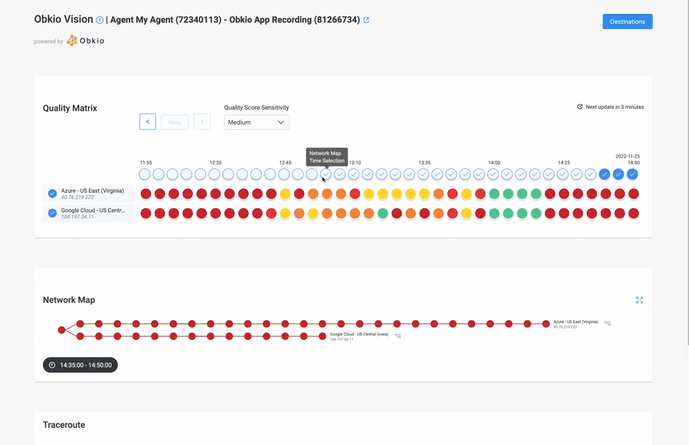

So now, let’s say that you know for sure that you have a network device issue on your hand. You've monitored your devices, you’re identified a problem. It’s time to get into the good stuff: troubleshooting. Troubleshooting network device issues can be a complex task, but here are some tips to help you navigate and resolve common problems:
- Check Physical Connections: Ensure all cables are securely connected, and there are no loose or damaged cables. Physical layer issues can often lead to connectivity problems.
- Verify Power Supply: Confirm that the network device has a stable power supply. Fluctuations or interruptions in power can cause devices to behave unexpectedly.
- Review Configuration Settings: Check the configuration settings of the network device. Incorrect configurations, such as IP address conflicts or misconfigured routing, can lead to connectivity issues.
- Examine Device Logs: Review the logs on the network device for any error messages or warnings. Logs can provide valuable information about the device's operational status and potential issues.
- Update Firmware/Software: Ensure that the device's firmware or software is up-to-date. Manufacturers often release updates to address bugs, security vulnerabilities, and improve overall performance.
- Isolate the Problem: Use a process of elimination to isolate the issue. Disconnect or bypass components one at a time to identify whether the problem is with a specific device or segment of the network.
- Perform Ping Tests: Use ping tests to check the device's responsiveness. This can help identify issues such as packet loss, high latency, or unresponsive devices.
- Check for IP Address Conflicts: Verify that there are no IP address conflicts on the network using IP Monitoring. Duplicate IP addresses can cause communication problems between devices.
- Inspect Network Traffic: Use network monitoring tools to analyze network traffic. Unusual patterns or spikes in traffic may indicate a network device is under stress or facing a security threat.
- Test with Alternative Equipment: If possible, swap out the network device with a known-good device to see if the problem persists. This helps determine whether the issue is specific to the device itself.
- Verify Network Protocols: Ensure that the network device is using the correct network protocols. Mismatched or incompatible protocols can lead to communication issues.
- Security Audits: Conduct security audits to identify and address potential vulnerabilities. Unwanted intrusions or malware can compromise the functionality of network devices.
- Consider Environmental Factors: Evaluate the environmental conditions where the device is located. Factors like temperature, humidity, and physical obstructions can impact device performance.
Remember, patience and a systematic approach are essential when troubleshooting network device issues. Document your steps and observations to help you track progress and share information with colleagues or support teams if needed.

As we arrive at the conclusion of this article, let's zone in on some practical best practices tailored specifically for the world of network devices. By integrating these practices into your routine, you'll be better equipped to handle device-specific challenges, ensuring a seamless and efficient operation of your network infrastructure.
So, let's dive into these best practices, you’ve earned it!
Use Centralized Monitoring:
Implement a centralized monitoring solution, like Obkio, that provides a unified view of all network devices. This streamlines management and facilitates quick identification of issues.


Real-Time Alerts:
Set up real-time alerts for critical events or performance thresholds. Alerts can notify administrators immediately when anomalies occur, enabling prompt responses to potential issues.
Monitor Bandwidth Usage:
Keep a close eye on bandwidth usage to identify potential bottlenecks or congestion points. Monitoring bandwidth helps ensure that the network can handle the current load and is prepared for growth.
Track Latency and Packet Loss:
Monitor latency and measure packet loss to assess network responsiveness. High latency or packet loss can impact user experience and indicate potential performance issues.
Utilize Historical Data:
Leverage historical data for trend analysis and capacity planning. Understanding how network performance has evolved over time can help in predicting and preventing future issues.
Monitor Device Health:
Monitor the health of individual devices by tracking metrics such as CPU usage, memory utilization, and disk space. This helps identify devices that may be under stress or approaching network capacity limits.
Establish Baselines:
Establish performance baselines for normal network behavior. Deviations from these network baselines can be indicative of issues and warrant further investigation.
By following these best practices, organizations can build a robust network monitoring strategy that proactively addresses issues, enhances performance, and ensures the overall health of their network infrastructure.

Understanding how to effectively monitor network devices is more than just a skill—it's a critical aspect of ensuring a robust and reliable network infrastructure. From routers to SNMP polling, we've navigated the essentials, highlighting the diversity of devices and the significance of proactive monitoring.
Key Takeaways:
- Device Diversity Matters: Each network device plays a unique role, and monitoring them all is crucial for maintaining a resilient and efficient network infrastructure.
- Proactive Monitoring is Essential: The combination of real-time alerts and historical data empowers administrators to anticipate issues, react swiftly, and proactively optimize network performance.
- Obkio's Network Monitoring Tool Stands Out: With its user-friendly dashboards, real-time alerting, and seamless integration of historical insights, Obkio emerges as a comprehensive solution to elevate your network monitoring game.
Ready to Take Control of Your Network Devices?

Take charge of your network device monitoring with Obkio. Achieve seamless device performance, identify potential bottlenecks, and stay ahead of issues before they impact your network devices. Embrace Obkio’s Network Monitoring tool today and ensure your network devices operate with precision and confidence.
Don't wait for issues to surface; be in control with Obkio. Start monitoring your network devices with precision and confidence.
- 14-day free trial of all premium features
- Deploy in just 10 minutes
- Monitor performance in all key network locations
- Measure real-time network metrics
- Identify and troubleshoot live network problems

Let us show you how to monitor network devices in minutes! We'll discuss your use case and show you around Obkio's app.


























 Obkio Blog
Obkio Blog



